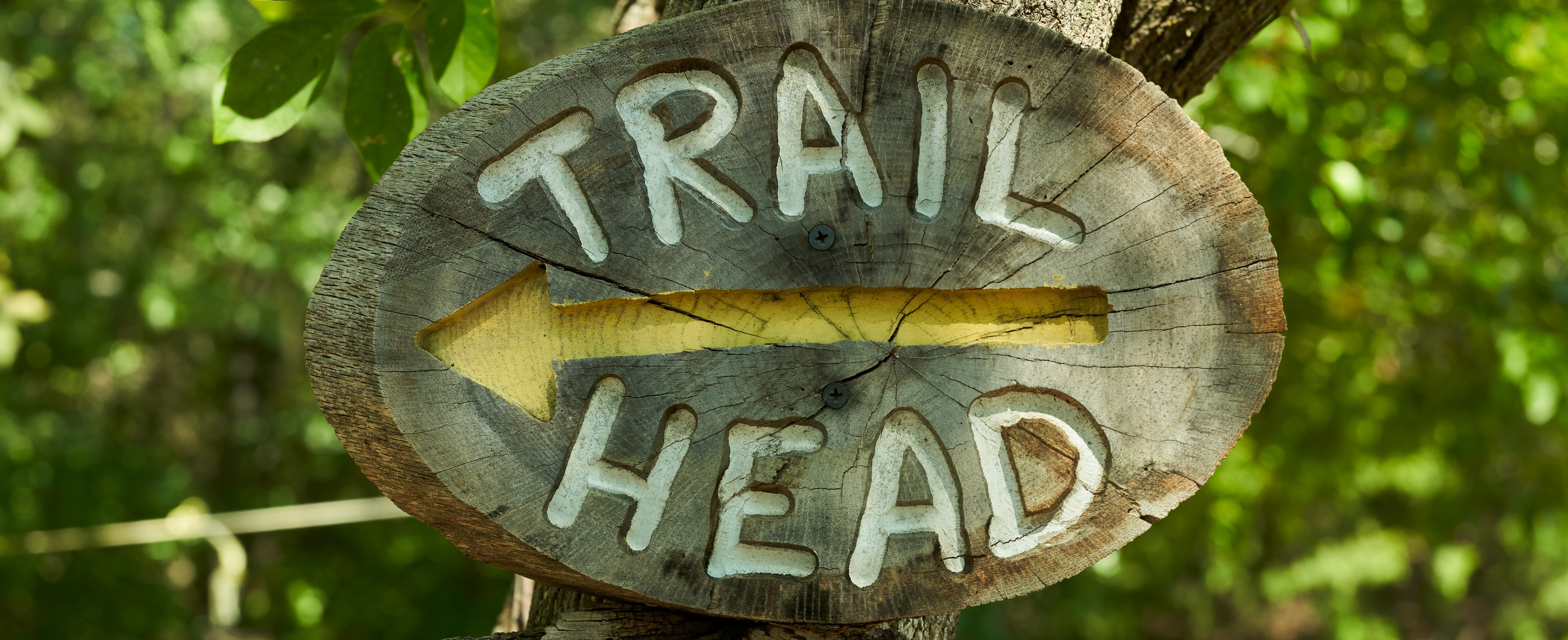Of all the paths you take in life, make sure a few of them are dirt.
~ John Muir
On a beautiful, warm spring morning, with a vast expanse of a green meadow below dappled in sunlight and the only sounds being the birds tuning up for the day's symphony, those lucky enough to be hiking understand the essence of nature's majesty. To these intrepid trekkers, who leave nothing behind except the tracks of their boots, traveling the trail is a spiritual experience.
With all this beauty and the opportunity to challenge nature (while getting an excellent aerobic workout), what could possibly go wrong?
Unfortunately, plenty! There are many hiking hazards, any one of which can put an end to or make miserable what would have been a glorious day in the wild.
That's the bad news. Here's the good news. With a little preparation, physical stamina and the right gear, hikers can enjoy their day in the sun without the pain from injuries. A well-regarded hiking website, "A Woman Afoot," offers four tips to help hikers minimize hazards.
-
Know the trail. Read about the trail you want to hike. A friend’s recommendation is just not enough. You need to know the difficulty level, unique challenges, gear needed, water sourcing, camping options, terrain conditions, wildlife in the area, specific laws and regulations.
-
Know the weather. The best way to get yourself into trouble is to ignore weather forecast or to rely on what it is for a city nearby. Nowadays, we have better and better technology and scientific know-how to predict weather changes. Make sure you read them carefully and always be prepared for worsening of the conditions predicted.
-
Know your navigation skills. With the rise of technology, there are apps that make hiking so much easier! You may love your ViewRanger, and it may have saved you from many a tight spot. BUT you need to be very careful how we use our smartphones and not to rely solely on them. Batteries die, the connection might break. It is still important to have a regular map, a compass and know how to use both of them.
-
Take care of your body, especially your feet.
This final point – how to avoid hiking accidents that can cause pain and injury to your body is an area that calls for an orthopedic expert. We had the chance to speak with Dr. Chris Sakowski, Dr. Donald Hohman, and Dr. Jack Zigler, who are members of the Texas Health Center for Diagnostics and Surgery medical staff. We asked them about their suggestions for avoiding injuries when someone decides to take a hike.
Snatching Victory from the Jaws of da Feet
 "Since a hiker is on his or her feet for most of the trip, foot injuries can be a problem for both veterans and newbies to the sport," said Dr. Sakowski, an orthopedic surgeon specializing in foot and ankle injuries. "The most common aliment is the formation of blisters on the heel or toes. Improperly fitting boots are the primary culprit for this condition. However, even well-worn hiking boots can cause blisters when the terrain is different than what the wearer is used to walking. Some good rules of thumb for avoiding and dealing with blisters are:
"Since a hiker is on his or her feet for most of the trip, foot injuries can be a problem for both veterans and newbies to the sport," said Dr. Sakowski, an orthopedic surgeon specializing in foot and ankle injuries. "The most common aliment is the formation of blisters on the heel or toes. Improperly fitting boots are the primary culprit for this condition. However, even well-worn hiking boots can cause blisters when the terrain is different than what the wearer is used to walking. Some good rules of thumb for avoiding and dealing with blisters are:
-
Wear only shoes with good grip. Don’t go trail walking with just ordinary sneakers – they are made for asphalt, not the trail.
-
Whenever possible – take the boots off during breaks to let your feet air a bit.
-
Double socking systems helps to prevent blisters. For example, a hiker can wear a thin liner and a woolen sock over it. Or, a five-toe sock liner can keep toes from overlapping each other and causing blisters.
-
If blisters occur, having blister pads in the first aid kit can help get the hiker back home.
"Other foot injuries can result from hiking insoles that are the wrong match for your feet. If you have a high arch but you are wearing flat and wide boots, it’s likely you will feel discomfort and potentially pain at some point and problems like plantar fasciitis can result. Sporting goods stores typically have footwear experts on staff who can help you pick the best pair of boots for your foot and the terrain you plan on hiking."
Hiking Can Put You Knee-Deep in Pain
 "Knee pain, especially among older hikers who may be experiencing the onset of arthritis, is common for this activity," Dr. Hohman, a joint replacement surgeon specializing in hips and knees, said. "One strategy for dealing with this knee pain is to use trekking poles when you hike. They can really help to spread the load out when going up and down steep sections. I especially find the downhill can be tough on the knees. Trekking poles can be a great help in lowering the pressure on the knee joints.
"Knee pain, especially among older hikers who may be experiencing the onset of arthritis, is common for this activity," Dr. Hohman, a joint replacement surgeon specializing in hips and knees, said. "One strategy for dealing with this knee pain is to use trekking poles when you hike. They can really help to spread the load out when going up and down steep sections. I especially find the downhill can be tough on the knees. Trekking poles can be a great help in lowering the pressure on the knee joints.
"Another piece of gear to consider is a knee sleeve support. This is an inexpensive way to get extra support on the knees.
"Finally, you can also consider taking a supplement that is good for the joints, like Glucosamine and or Chondroiton. Before taking these supplements, it is a good idea to consult with a joint specialist to ensure that they will not have adverse effects on other medications that you may be taking."
How Standing Up Straight Can Prevent Back Pain from Hiking
Back pain can also occur among hikers because of poor posture.
 "As you hike, you tend to slump forward as your body gets more tired,” Dr. Jack Zigler, an orthopedic surgeon specializing in spine surgery, noted. "The trekking poles (mentioned above) can help with this problem by keeping the hiker's posture in better alignment during a long hike. The extra support results in reducing the stress on your back. “
"As you hike, you tend to slump forward as your body gets more tired,” Dr. Jack Zigler, an orthopedic surgeon specializing in spine surgery, noted. "The trekking poles (mentioned above) can help with this problem by keeping the hiker's posture in better alignment during a long hike. The extra support results in reducing the stress on your back. “
If you love to hike but pain is keeping you off the trail, contact us at Texas Health Center for Diagnostics and Surgery to make an appointment with a physician on the medical staff.
